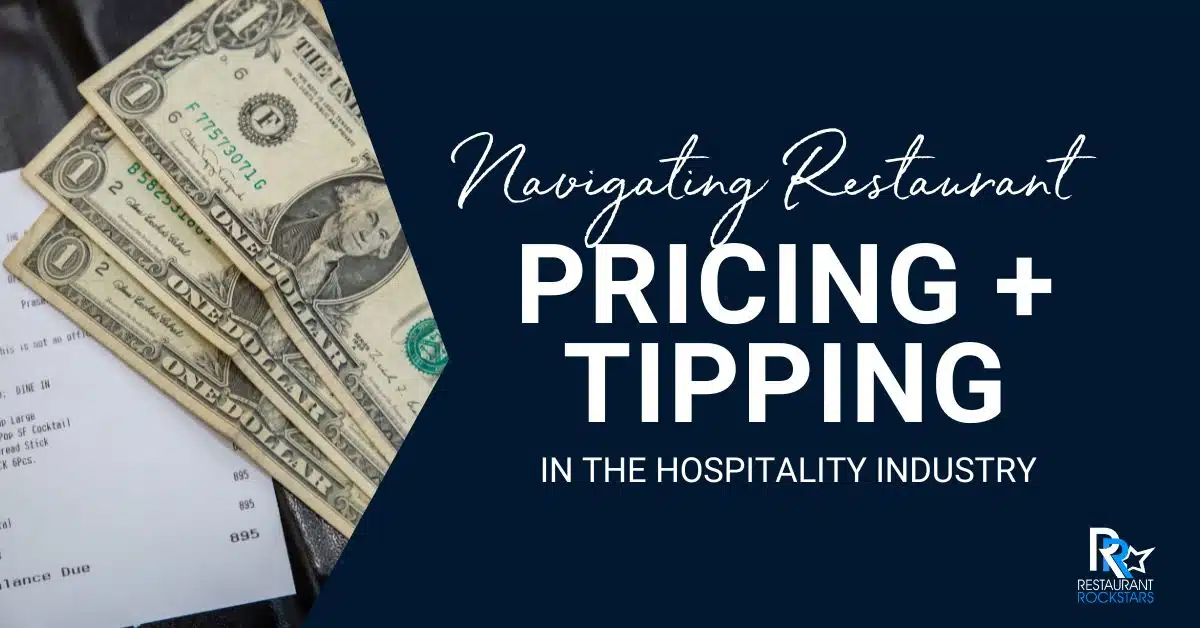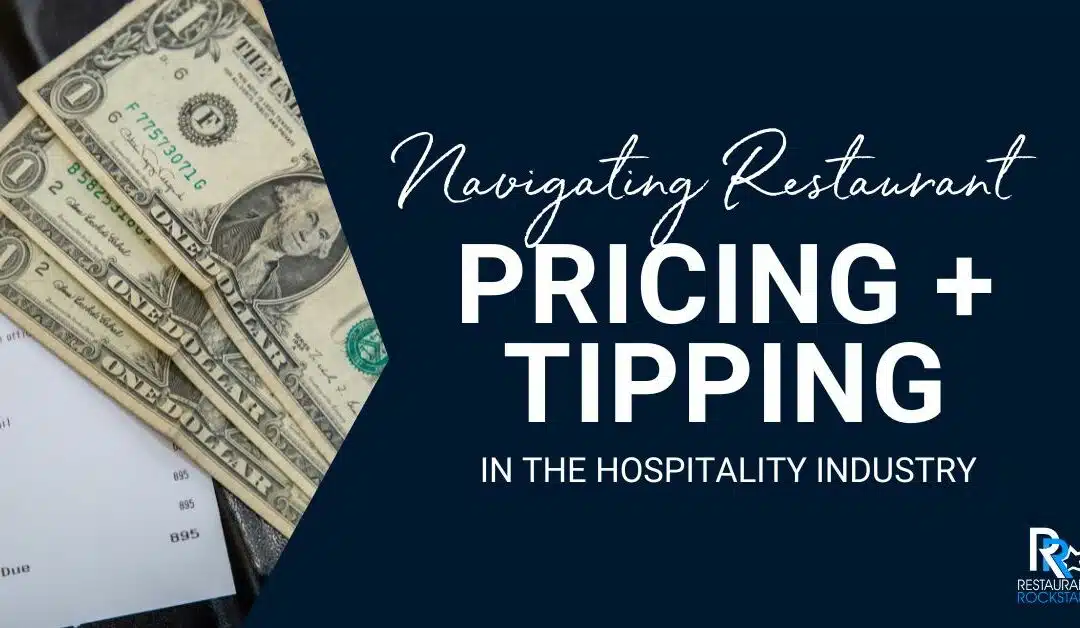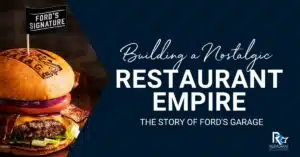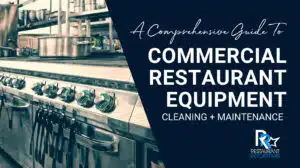
Restaurant Pricing strategy and tipping nuances are divisive topics in the hospitality industry.
Different types of restaurants, their varying menu options and service levels affect the intricate dynamics of pricing. As restaurant owners or their GMs navigate the complexities of modern diner’s expectations; pricing, tipping, labor challenges, wages and customer perceptions all impact a business’s profitability. An effective pricing strategy is much more than just a simple function of supply and demand; but instead involves understanding the value consumers place on products and the service received.
Restaurant Pricing Strategies for Profit Maximization
Restaurants must do more than simply cover costs and compete in a saturated marketplace. They need to continually gauge consumer trends, control costs, and stay relevant to their loyal guests while constantly attracting a new clientele.
For a restaurant to thrive long-term, it’s important for them to:
– Regularly update menus to reflect cost increases
– Transparently communicate pricing adjustments to guests and
– Experiment with price variability to encourage trials of new offerings and adjust for high-demand items
Challenges to Be Overcome to Remain Profitable
Both inflation and the labor crisis have impacted restaurant pricing most significantly, as it has become increasingly difficult to continue to meet or exceed guest expectations while still providing value when short staffed. The pitfall remains that there is a ceiling to continually increasing menu prices without the value proposition being lost on the guest.
The only true solution is being able to control costs, maximize profit on every item sold, increasing guest traffic, and turning tables.
Tipping: Navigating Changes and Guest Perceptions
The topic of tipping is also a particularly contentious issue. Tips received varies based on quality of service provided, age, income and habit of diners, and even cultural differences, perceptions and practices by tourists visiting from other countries.
It’s important for owners and their managers to train staff for superior service. Tipped staff must understand that gratuities are earned based on personality, attentiveness, and quality of service. Gratuities should never be entitled or expected.
Restaurants should:
– Educate guests on tipping practices and changes to tipping policies
– Consider wage adjustments to balance tipping expectations and income stability for staff
– Continually evaluate the impact of tipping policies on service quality and guest satisfaction
Customer Expectations and Experience
Offering value to guests and sustaining profitability requires:
– Tailoring service and pricing to match guest expectations, particularly in varied dining environments from fast-casual to fine dining
– Leveraging customer feedback to continuously improve service standards and menu offerings
– Embracing technology to streamline operations and enhance the dining experience, while being mindful of over-reliance on automated service interactions
The future of your restaurant profit and service excellence lies in finding the delicate balance between pricing, labor management, and customer engagement. Embracing change, being transparent, communicating with guests and staff and focusing on the dining experience will guide restaurants through the evolving challenges of the hospitality industry.
The Restaurant Academy
Open & run your restaurant the smart way
What if you had the strategies and tools to maximize your profits and run a wildly successful restaurant?
You could finally stop flying by the seat of your pants and grow your restaurant with next-level confidence.
Only $59 per month. 30 day money-back guarantee.


Listen. Learn. Prosper.
The Restaurant Rockstars Podcast
Engaging conversations with industry leaders and fellow restaurateurs who spill the beans on their tips, tricks, and best-kept secrets to help you rock YOUR restaurant.
Don't forget to subscribe to the Restaurant Rockstars podcast on your favorite podcast platform and never miss an episode.










